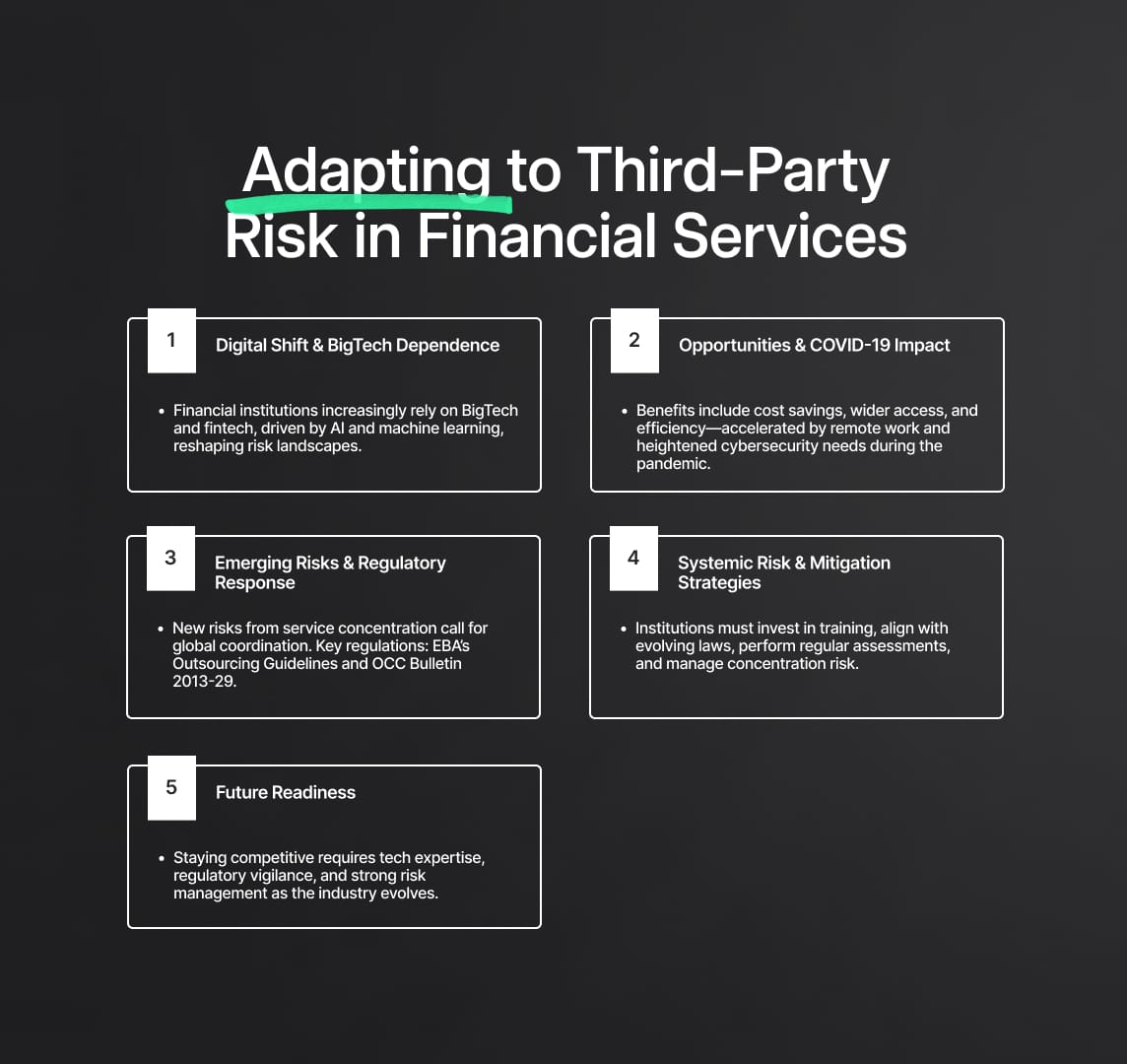Third-Party Risk Management in Financial Services
Financial institutions rely on BigTech and fintech for services, changing third-party risk management. Tech advancements bring opportunities and challenges, improving efficiency and access to finance. COVID-19 highlights digital platforms and cybersecurity. Regulators adapt to manage new risks.

Third-Party Risk Management in Financial Services: Fintech and Bigtech
The way financial institutions handle third-party risk has changed as a result of their increased reliance on BigTech and fintech companies to supply services. Rapid developments in fields like artificial intelligence and machine learning have sparked this shift, which has given the financial services industry both new opportunities and problems. In particular for individuals underserved by traditional financial services providers, these innovations have improved access to financial services, decreased costs, and boosted efficiencies. The importance of digital platforms and third-party solutions, which facilitate remote work and improve cybersecurity, has been further highlighted by the COVID-19 epidemic. These technologically driven innovations have brought about new dangers, though, which financial institutions must successfully manage. In order to control these risks, authorities are taking into account new regulations and supervisory techniques.
Adapting to the New Era of Third-Party Risk Management in Financial Services
With the growing reliance on BigTech and fintech companies causing seismic transformations in the financial services sector, institutions globally are forced to rethink their approaches to managing third-party risk. This digital transformation offers a distinct set of opportunities and challenges, mostly due to technology developments in artificial intelligence and machine learning.
Important sector participants include asset management organizations, credit unions, investment brokerages, insurance providers, and commercial banks now have to deal with a wider range of hazards. Their capacity to adjust to this paradigm change will be a key factor in determining how competitive they are in the increasingly digital financial industry.
Benefits of this tech-led revolution include reduced costs, increased accessibility to financial services, and enhanced operational efficiencies, especially in emerging nations. The importance of digital platforms and third-party technology has been further highlighted by the COVID-19 epidemic, which has transformed remote work and strengthened cybersecurity precautions.
But this new frontier also brings with it a slew of hazards that call for careful handling. Global financial authorities are considering new regulations and supervisory techniques to address these issues. Key reference points for comprehending these new dynamics include regulations such as the European Banking Authority's (EBA) Guidelines on Outsourcing Arrangements and the US Office of the Comptroller of the Currency's (OCC) Bulletin 2013-29.
Systemic dangers arise from the growing concentration of services among a small number of internationally dominating BigTech and fintech companies. Therefore, preventing these risks and ensuring the resilience of the financial system would require a coordinated worldwide strategy to third-party risk management, as suggested by the Financial Stability Board.
To better understand and manage third-party risk, financial institutions should invest in staff training, implement comprehensive risk management procedures that are in line with impending legislative changes, and conduct regular risk assessments. In a world where services are becoming more concentrated among a small number of dominating firms, it is also critical to plan strategies to mitigate concentration risk.
Although the exact timing of this change is unknown, institutions should start preparing for the next phase of third-party risk management and stay alert for regulatory changes. It will take a combination of technology know-how, regulatory awareness, and risk management experience to navigate this changing environment.

Reduce your
compliance risks

